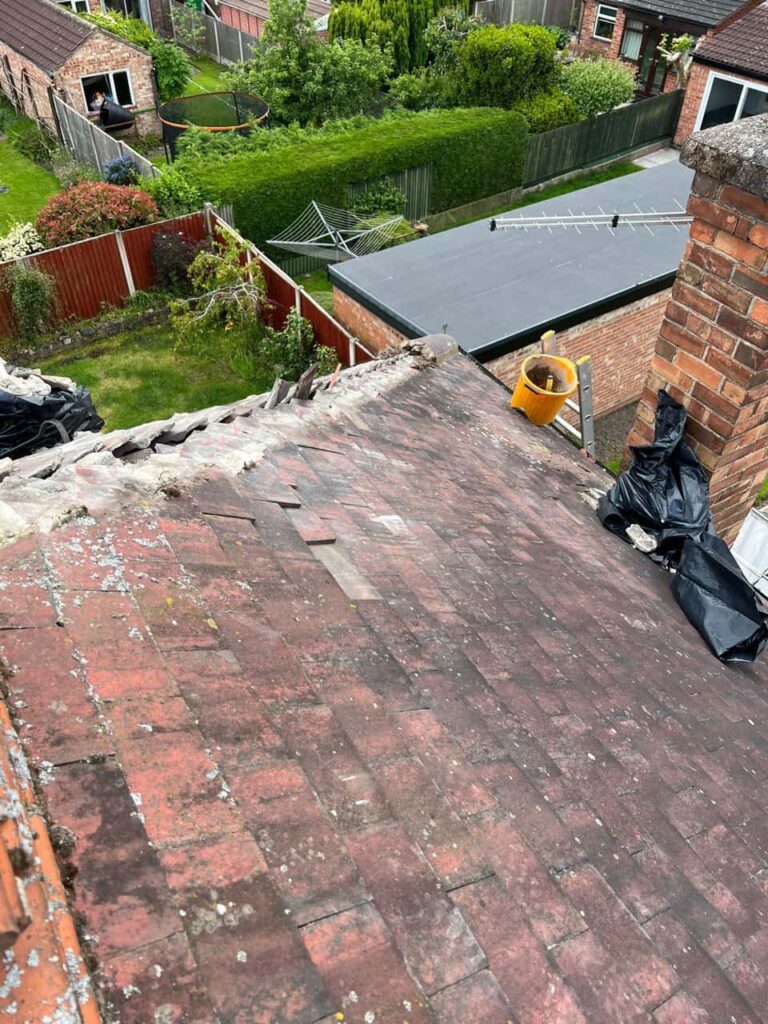Introduction
At first glance, moss on your roof might seem harmless—even quaint in some settings. But beneath its soft, green exterior lies a threat that can silently compromise the structural integrity of your roof and shorten its lifespan. In a region like Henley-on-Thames, Oxfordshire, where moisture and shade are common, moss growth is a frequent issue for property owners.
At LS Roofing Henley-on-Thames, we regularly encounter the hidden damage caused by untreated moss and lichen on roofing surfaces. This article explores why moss is more than just a cosmetic concern, what you should look out for, and how professional maintenance can protect your home.
What Causes Moss to Grow on Roofs?
Environmental Conditions
Moss thrives in damp, shaded environments. In Henley-on-Thames, homes surrounded by trees or those with north-facing slopes are particularly susceptible.
- Constant shade limits evaporation, keeping the roof damp
- Nearby trees drop organic debris, which promotes moss colonisation
- Rainwater runoff may not dry quickly, allowing moss to take hold
Roofing Materials That Attract Moss
Some roofing materials retain moisture more than others, creating an ideal breeding ground for moss.
- Older clay and concrete tiles are particularly prone
- Rough-textured surfaces allow moss spores to anchor easily
- Cracked or damaged tiles increase vulnerability
The Hidden Risks of Moss on Your Roof
Traps Moisture and Accelerates Wear
Moss absorbs and retains water like a sponge. This constant dampness puts pressure on roof materials.
- Encourages tile erosion, especially in freeze-thaw conditions
- Can cause surface deterioration and premature ageing
- Undermines waterproofing elements, such as underlay and flashing
Lifts and Dislodges Roof Tiles
As moss expands, it can lift tiles and create small gaps, exposing the substructure to rainwater.
- Compromises tile alignment
- Leads to leaks and water ingress
- Makes the roof more vulnerable to storm damage
Blocks Gutters and Drainage Channels
When moss becomes dislodged, it often collects in gutters and downpipes, obstructing water flow.
- Causes gutters to overflow
- Promotes water pooling near foundations
- Increases risk of damp inside the property
Encourages Further Organic Growth
Once moss is established, it often brings along algae, mould, and lichen, creating a larger problem over time.
- Affects aesthetics and property value
- Promotes decay of wooden components and render
- Can spread to driveways, patios, and other structures
Signs Moss May Be Harming Your Roof
- Green patches visible from ground level
- Damp or musty smells in the loft or upper floors
- Water stains on ceilings or in roof space
- Overflowing or blocked gutters
- Uneven or misaligned roof tiles
Preventing Moss Growth on Your Roof
Regular Roof Inspections
Routine inspections by LS Roofing Henley-on-Thames can help catch early signs of moss growth before it causes major damage.
- Identifies high-risk areas based on pitch, orientation, and shade
- Allows for preventative action such as cleaning and sealing
- Monitors the health of flashing, ridge tiles, and underlay
Roof Cleaning and Treatment
Professional moss removal ensures thorough cleaning without damaging roof materials.
- Soft washing techniques prevent tile damage
- Biocidal treatments stop regrowth of moss and algae
- Helps restore the roof’s original appearance
Improve Roof Ventilation and Drainage
Good airflow and efficient drainage reduce the moisture levels that moss needs to grow.
- Ensure all gutters and downpipes are clear
- Maintain adequate roof ventilation to prevent condensation
- Trim overhanging trees to reduce shade
Why DIY Isn’t Always the Best Option
Climbing onto your roof with a stiff brush and water hose might seem like a simple solution, but improper moss removal can do more harm than good.
- Aggressive scrubbing can damage tiles and remove protective coatings
- Walking on wet, mossy tiles is extremely hazardous
- Chemicals used incorrectly may cause staining or environmental harm
It’s always advisable to leave moss removal and treatment to trained professionals who understand roofing systems and safety protocols.
Long-Term Solutions from LS Roofing Henley-on-Thames
At LS Roofing Henley-on-Thames, we don’t just remove moss—we help prevent it from returning. Our comprehensive roof maintenance service includes:
- Full inspection and photographic reporting
- Safe and effective moss removal methods
- Application of long-lasting moss inhibitors
- Gutter clearing and downpipe checks
- Repair of any tile, ridge, or flashing damage
Our local knowledge of conditions in Henley-on-Thames enables us to offer solutions that are practical, effective, and built to last.
Conclusion
Moss may grow quietly, but its impact on your roof can be anything but subtle. Left untreated, it accelerates roof wear, invites leaks, and causes expensive long-term issues. By recognising the warning signs and acting early with the help of professionals, you can extend the life of your roof and maintain the safety and value of your property.
If you’ve noticed moss starting to take hold on your roof in Henley-on-Thames, contact LS Roofing Henley-on-Thames. Our expert team offers tailored, reliable services to keep your roof clean, protected, and structurally sound.
Call us on: 01491 527 598
Click here to find out more about LS Roofing Henley-on-Thames
Click here to complete our contact form and see how we can help with your roofing needs.

